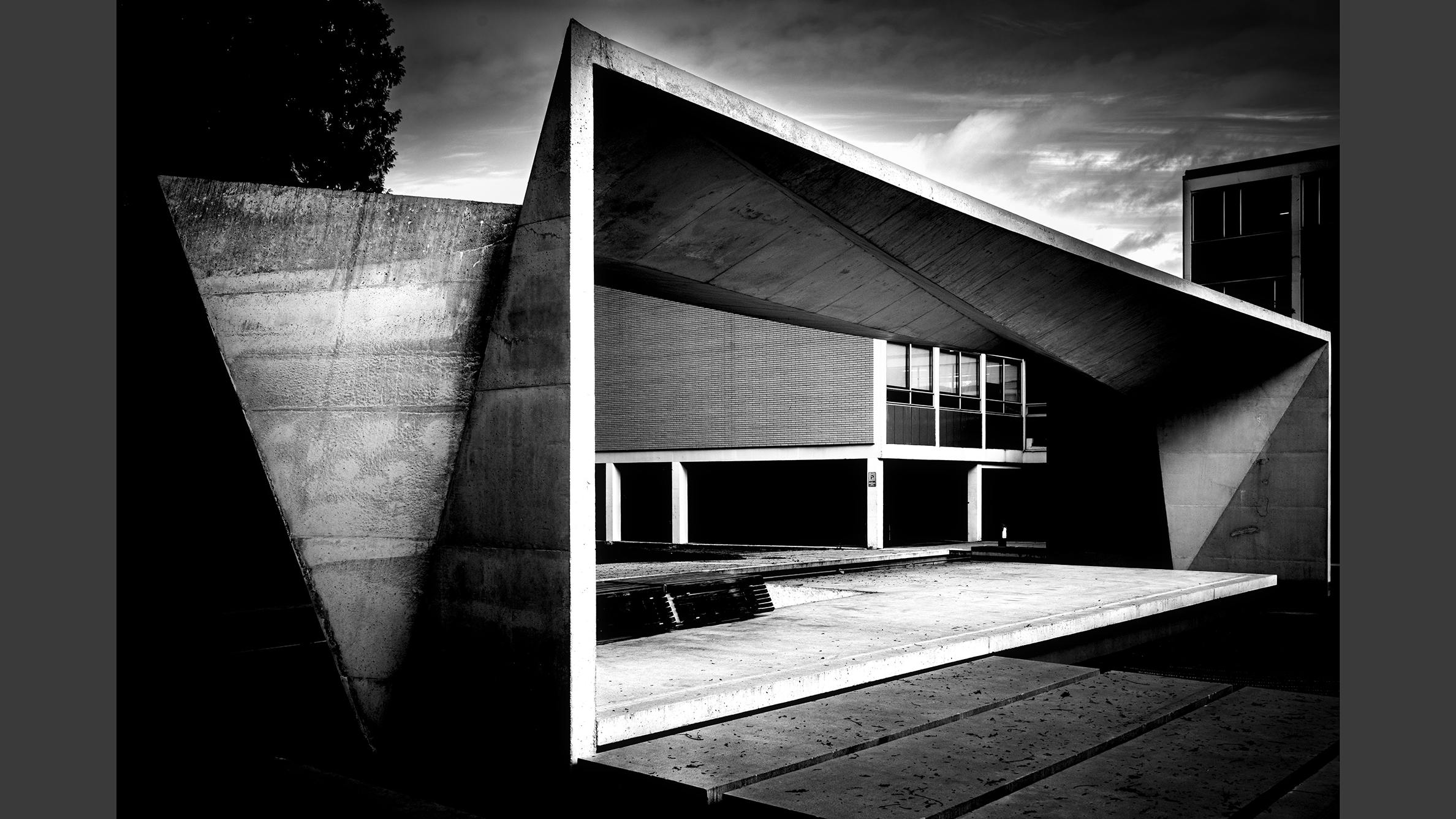The best ball heads for tripods in 2025: simple, speedy setup with sturdy support
A good ball head should make life simple, being quick and easy to set up while offering solid support. Here are the best options…

There are various types of tripod head to consider, including traditional 3-way heads, geared heads and more specialist items like the best gimbal heads, best panoramic heads and best pistol grip heads. For my money though (and probably yours too), there’s no beating a ball head for quick and easy setup, making it possible to get a vital shot before the moment has passed.
We often spend a lot of time thinking about the best tripods to buy, and rightly so, but ball heads often get forgotten about. A good ball head can make a huge difference when it comes to shooting, so it's worth investing in a good one, especially if your tripod kit came with a relatively humble ball head as part of a kit. So what makes a ball head stand out from the crowd? Particularly for travel tripods, you want something compact and lightweight, so it doesn't weigh you down. It's worth thinking about the size of your setup and how much weight the head needs to support; if you're using a DSLR or mirrorless camera with a long lens attached, the maximum payload capacity is a vital consideration.
The best thing is to pick a head with a larger ball diameter: around 40 or 50mm is a good compromise between stability and portability. Of course, if you're using a small camera with diminutive lenses, you can probably get away with something smaller. But fancy ball heads will provide functionality like smoother panning movement and well-engineered quick-release systems, often based on the Arca Swiss standard. An adjustable friction damper is often featured, enabling you to tailor the tactile feel for the camera kit you’re using at any given moment. For shooting video or taking sequences of shots to stitch into a panorama, a ball head with a separate panning lock/release can pay dividends. Let’s take a closer look at the best options on the market.
The Quick List
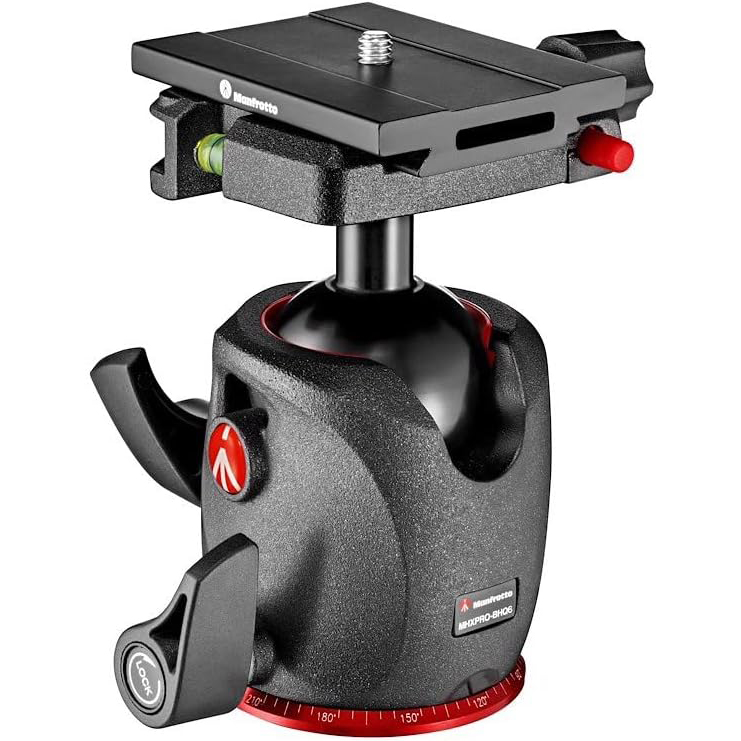
Best for ergonomics
Super-stable and resistant to sagging, its grease-free polymer housing enables exceptionally smooth movement, complete with adjustable friction and pan-only release.
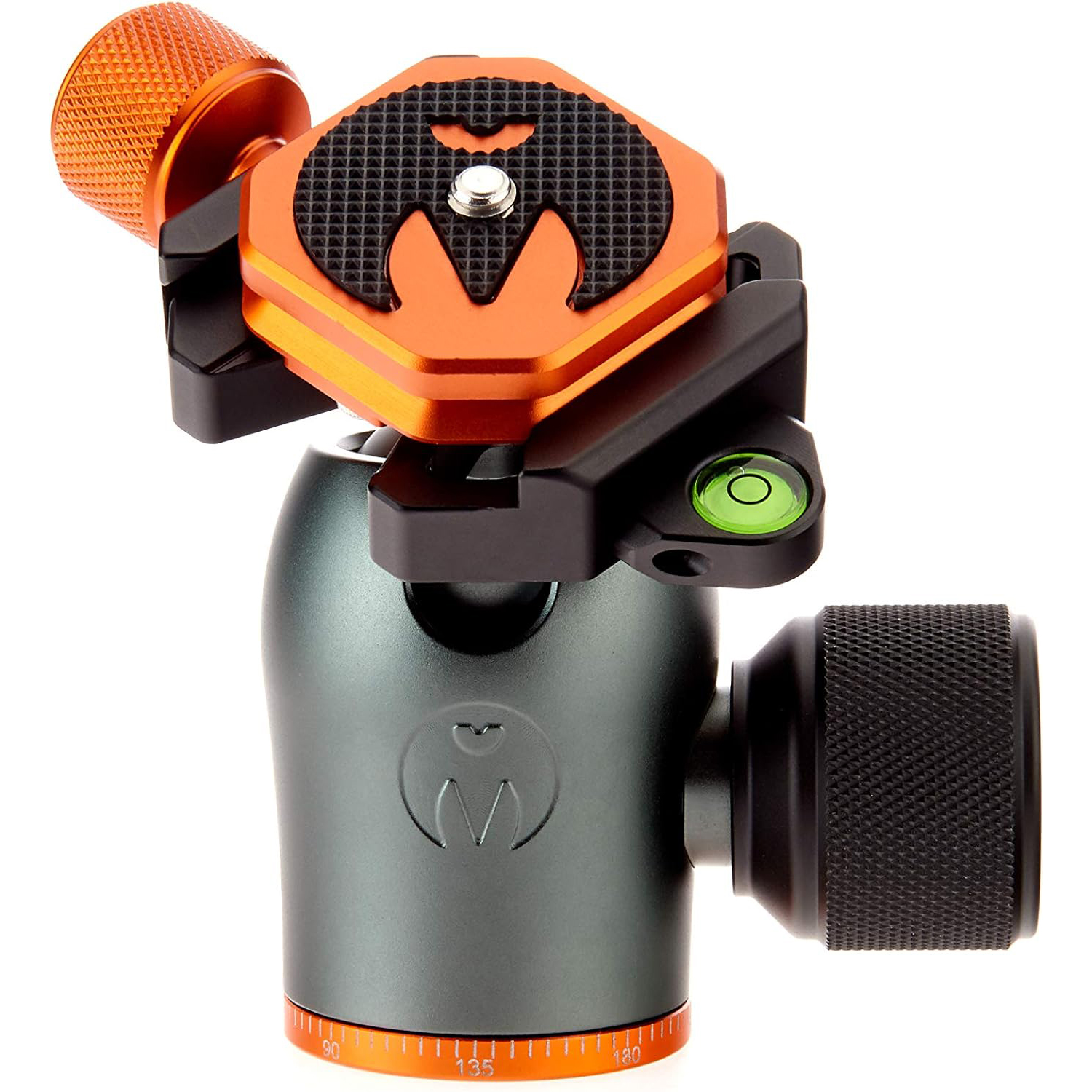
Best for flexibility
3 Legged Thing's ball heads and tripods have a reputation for exceptional carrying capacity and stability, and the AirHed Pro is no exception. It's also highly intuitive to use.
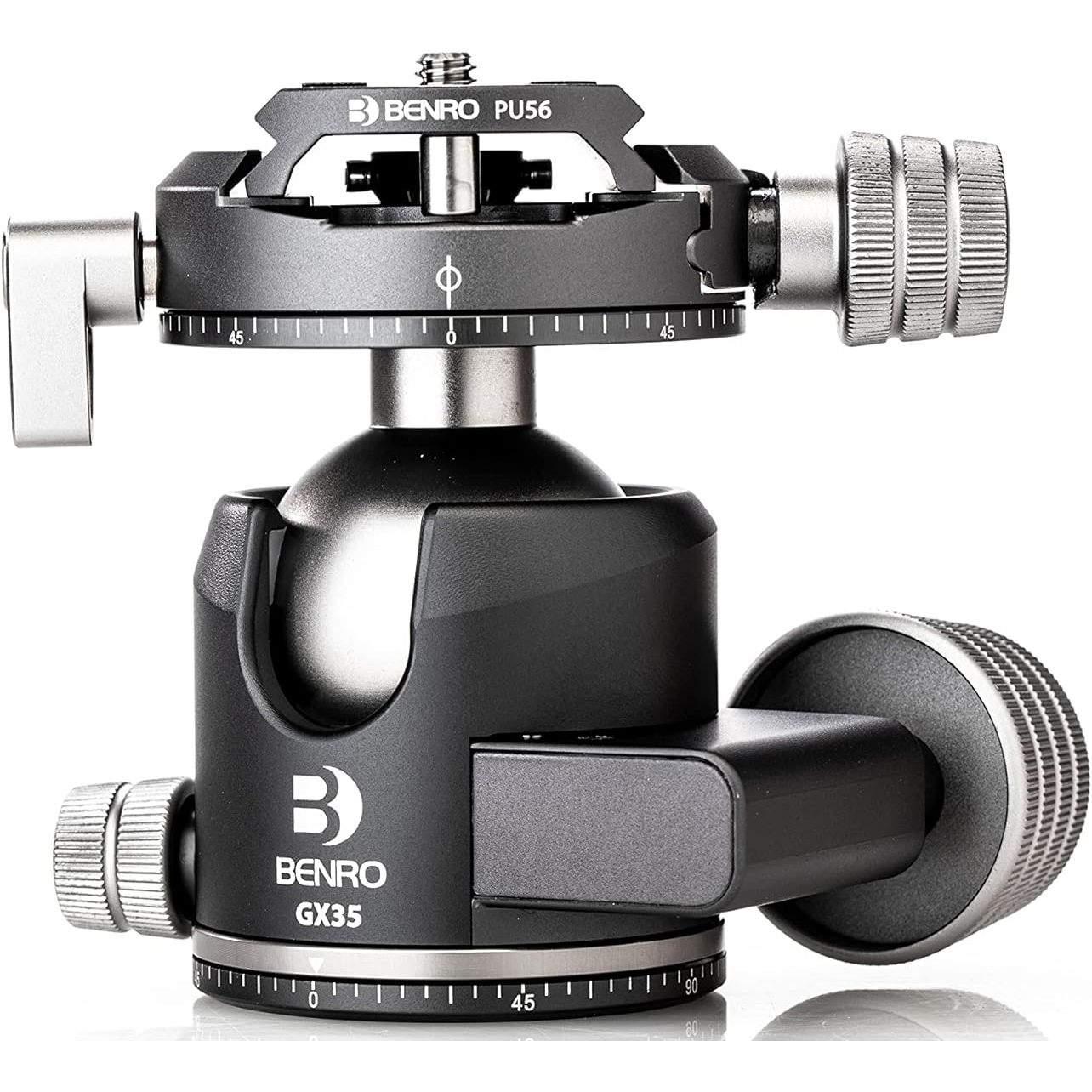
Best for lightweight
Despite weighing only 400g, the Benro GX35 is able to support a whopping 35kg of camera gear, with extra stability assured by the relatively large 40mm-diameter ball.
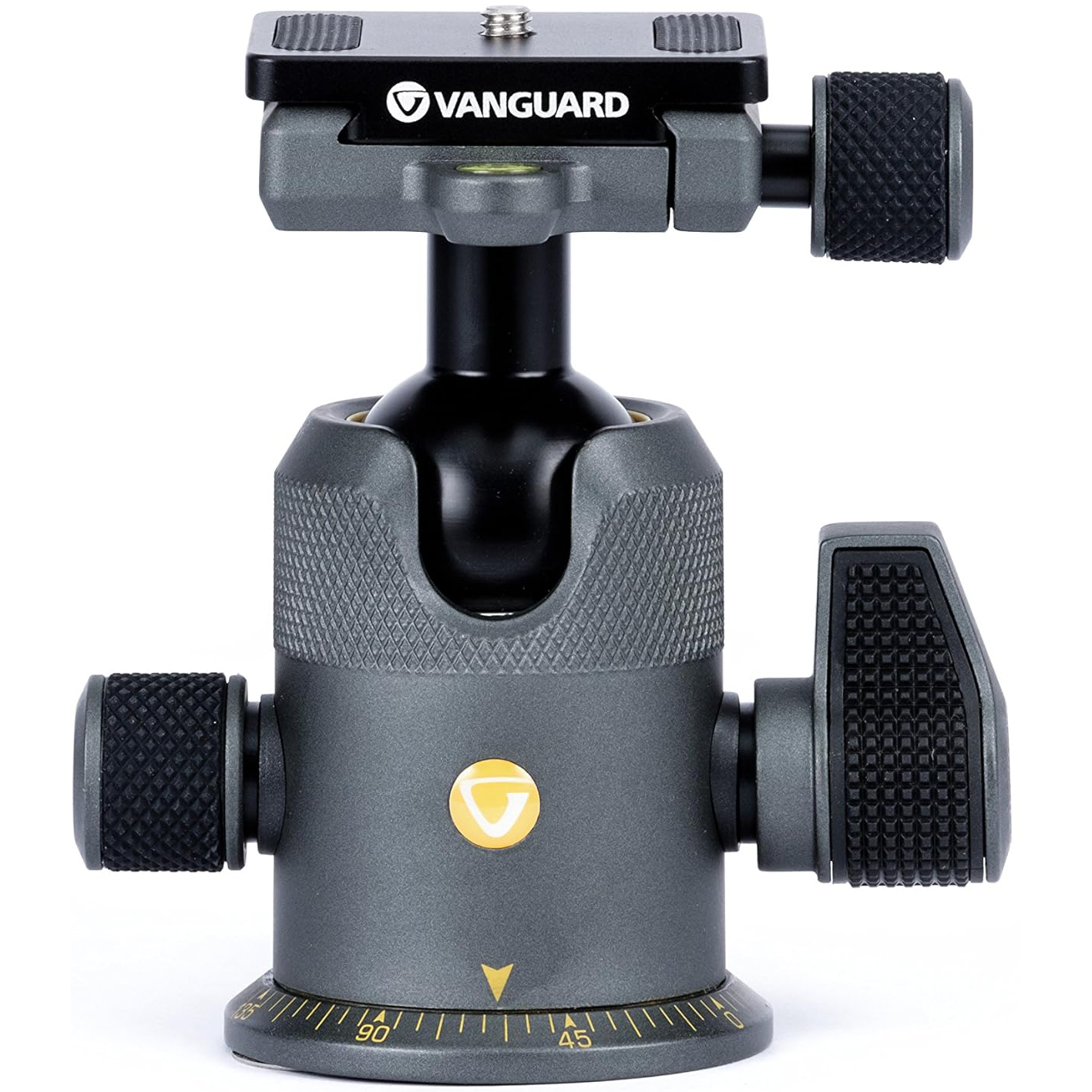
Best for budget
It's inexpensive for a big-brand tripod head, but the Alta BH-250 is still rated to support a whopping 20kg of kit, and it's immaculately finished. Build quality also feels reassuringly robust.
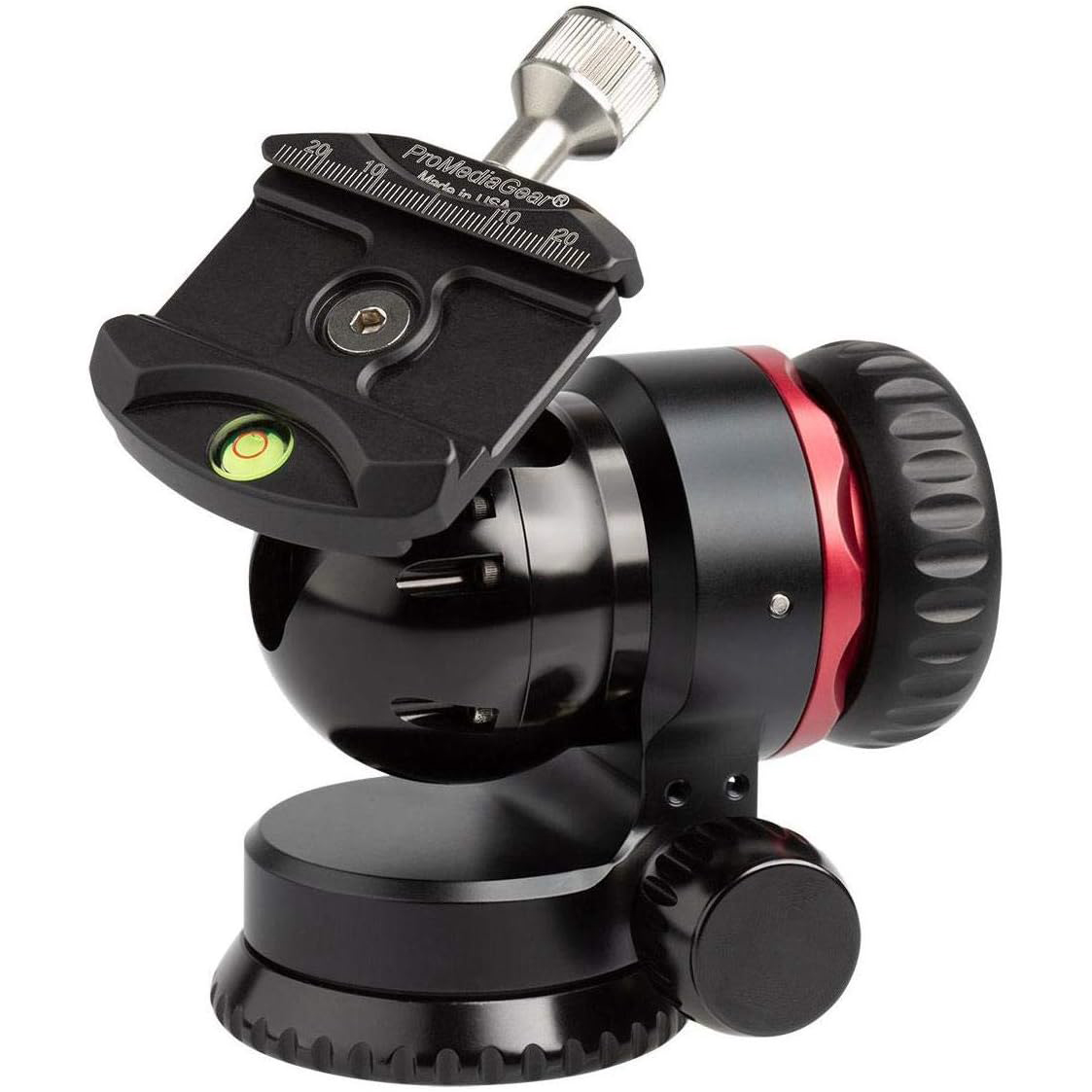
Best for professionals
With the BH1 you're getting something uniquely precise, and if that’s your priority, then the BH1 delivers. It works really well for architectural shooting and other scenarios where fine adjustments are required.
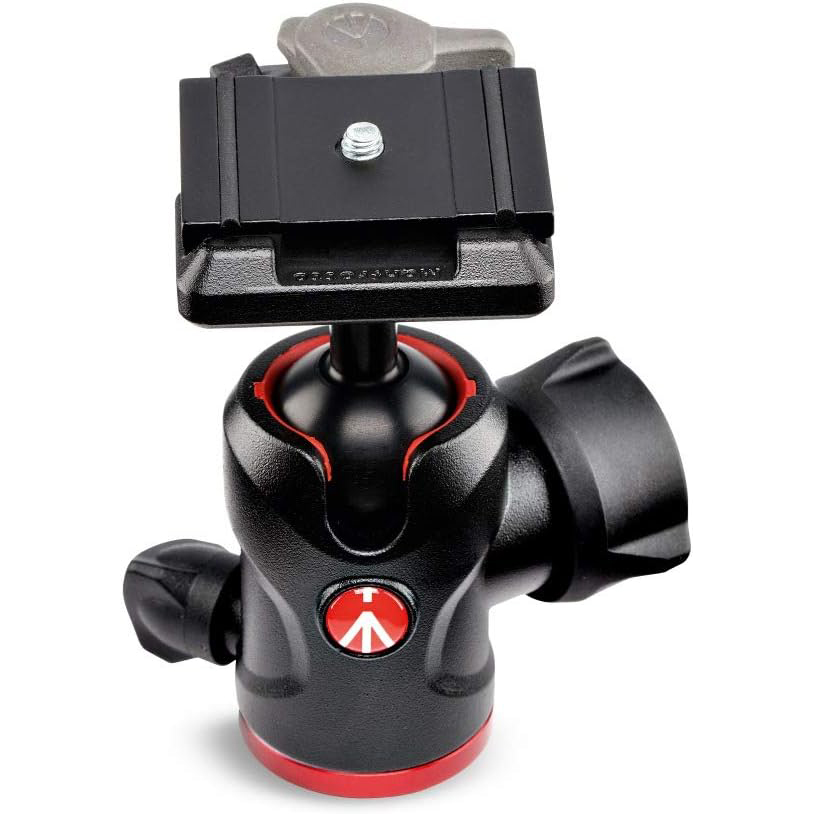
Best for value
Supporting up to 8kg of kit, this ball head offers panoramic and friction control knobs for easy and intuitive operation. Its slimline build makes it a good fit for travel tripods with swing-up legs.
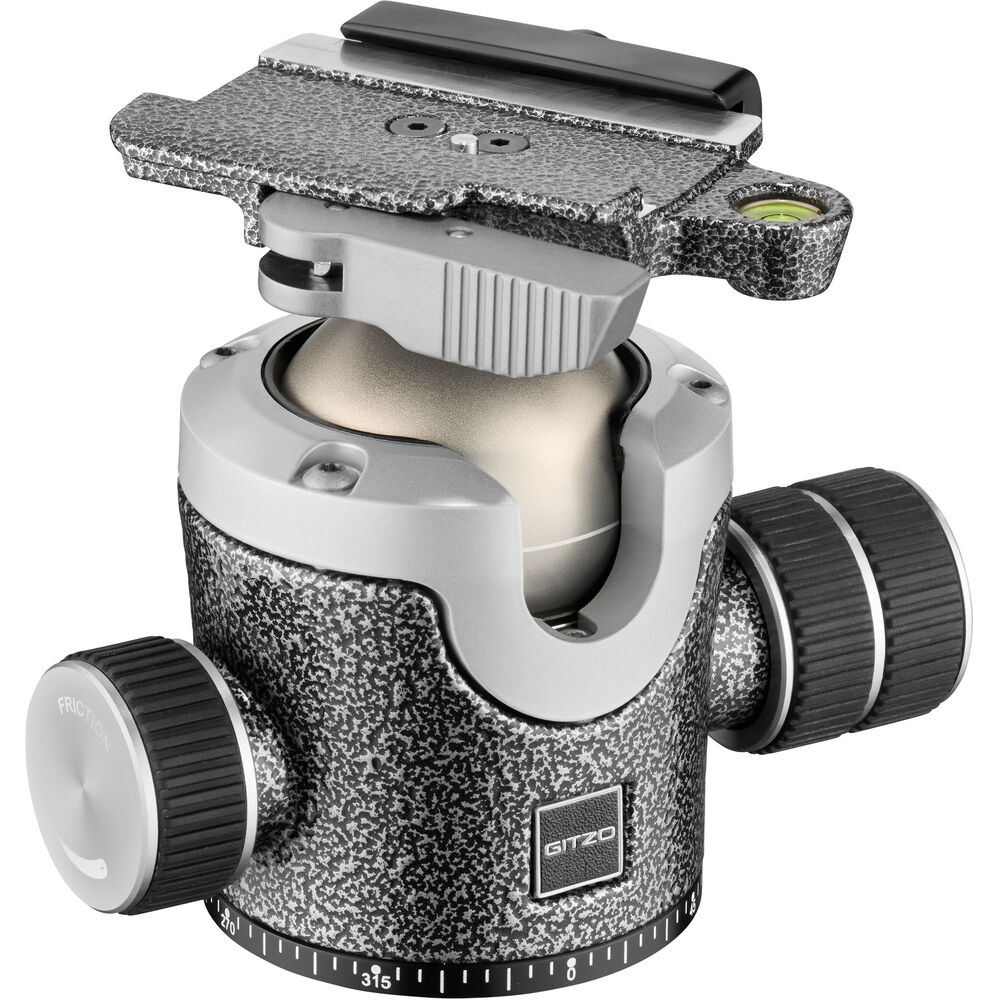
Best for luxury
Gitzo has earned a reputation over many decades for manufacturing kit that lasts a lifetime – and beyond. This ball head is hugely expensive but you know it will last and is a real luxury item.
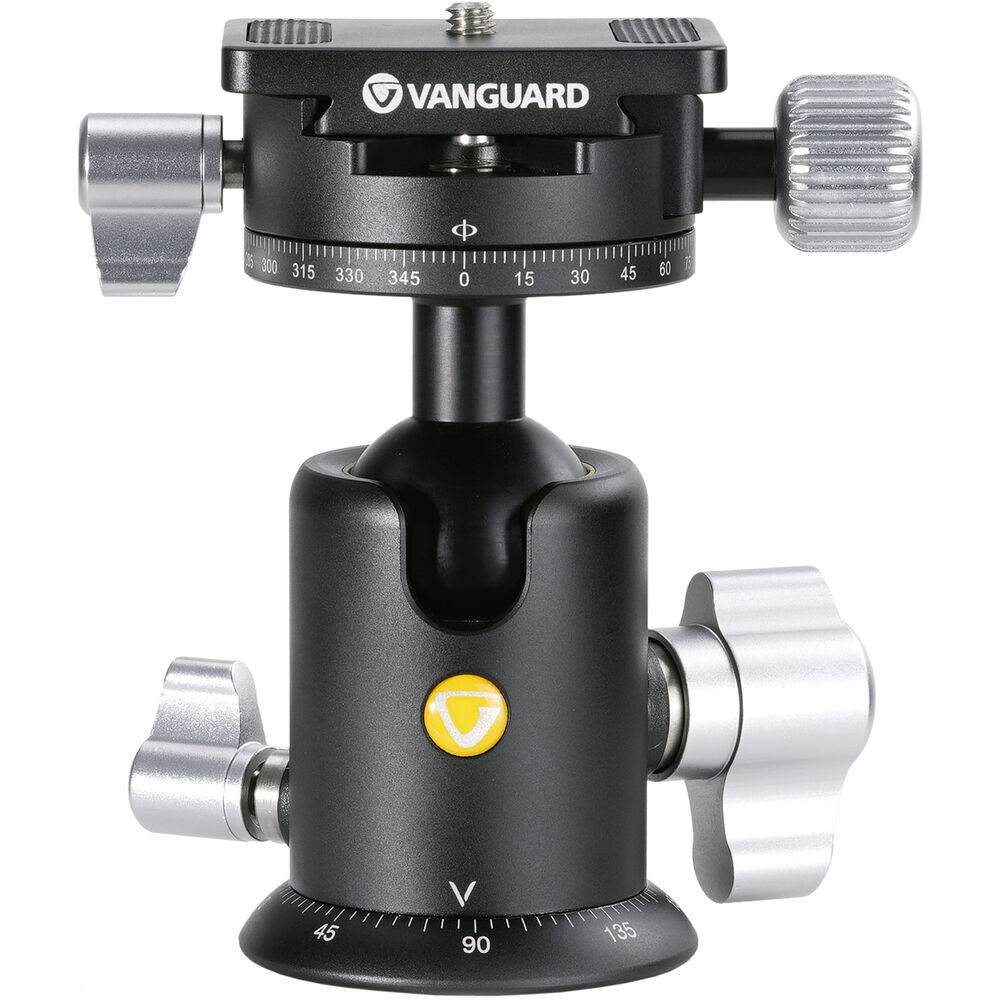
Best for stills & video
With so much talk of 'hybrid shooters' and 'content creators' recently, this Vanguard ball head aims to be equally adept for video as well as stills, with its dual-axis panning system.
The best ball heads for tripods
Why you can trust Digital Camera World
Best for ergonomics
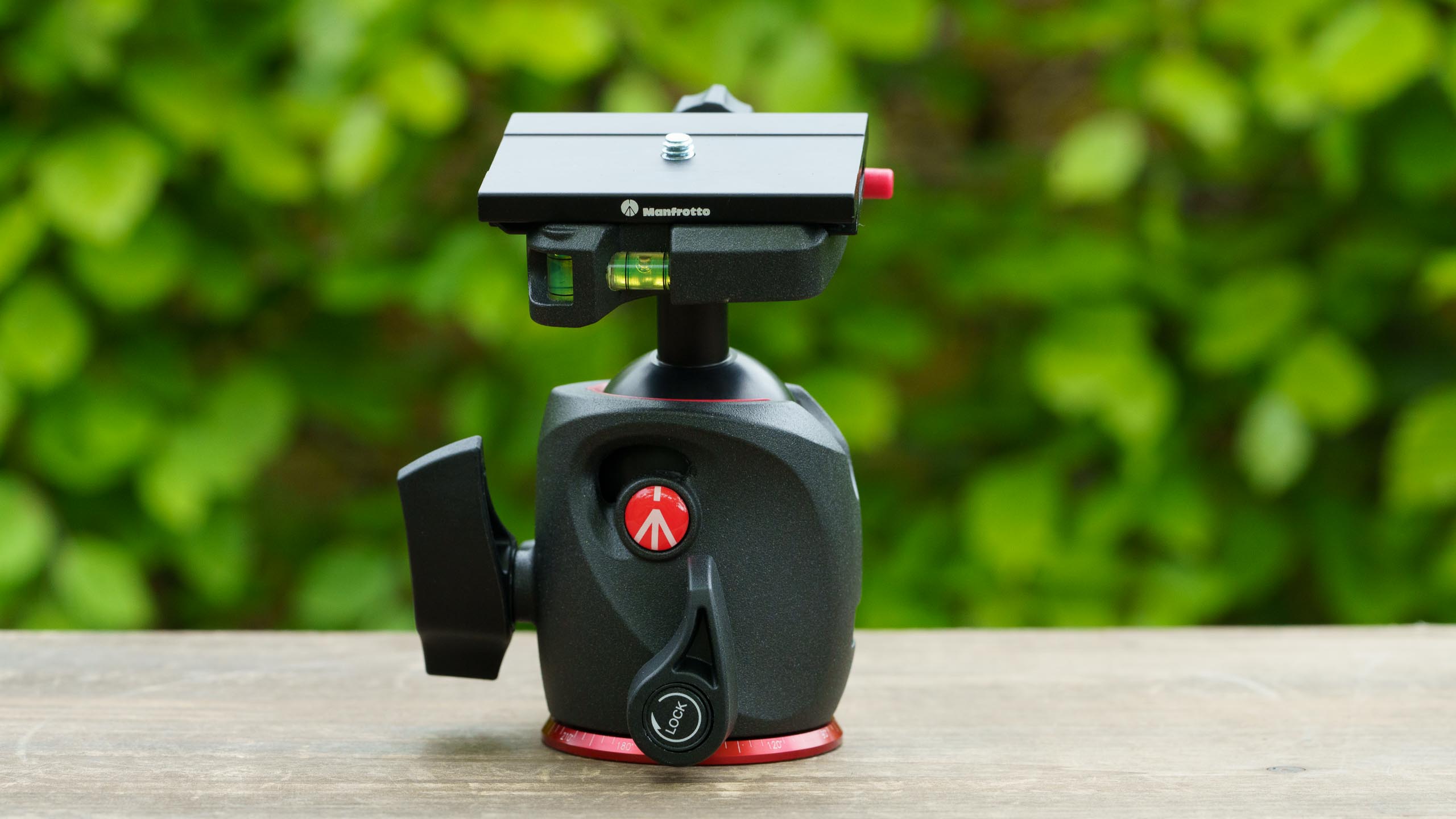
Specifications
Reasons to buy
Reasons to avoid
At first glance, Manfrotto's XPRO ball head doesn’t look particularly special, but there’s more than meets the eye. The magnesium construction is rated to support 10kg: enough for almost any full-frame set-up, yet the head tips the scales at a reasonable 520g.
At its heart is a fairly large ball for good stability, and its grease-free polymer housing enables exceptionally smooth movement, even with a lot of friction applied. The friction is set using a tactile, clicky wheel that’s better than most systems for dialing in a precise level of drag. Rather than using rubberized or knurled knobs, the ball and pan movement is tightened using levers that lock securely with minimal user effort. In testing, I found that this head was particularly good at resisting any sagging after tightening the main clamp and letting go of the camera.
The XPRO ball head can be specced with several mounting plate designs. I went for the Top Lock system which is Arca-Swiss compatible, with the QR plate released using a simple but effective button. The top plate is surrounded by three individual bubble levels for precision camera leveling, and they’re all viewable with your camera mounted.
See our full Manfrotto XPRO ball head review
Best for flexibility
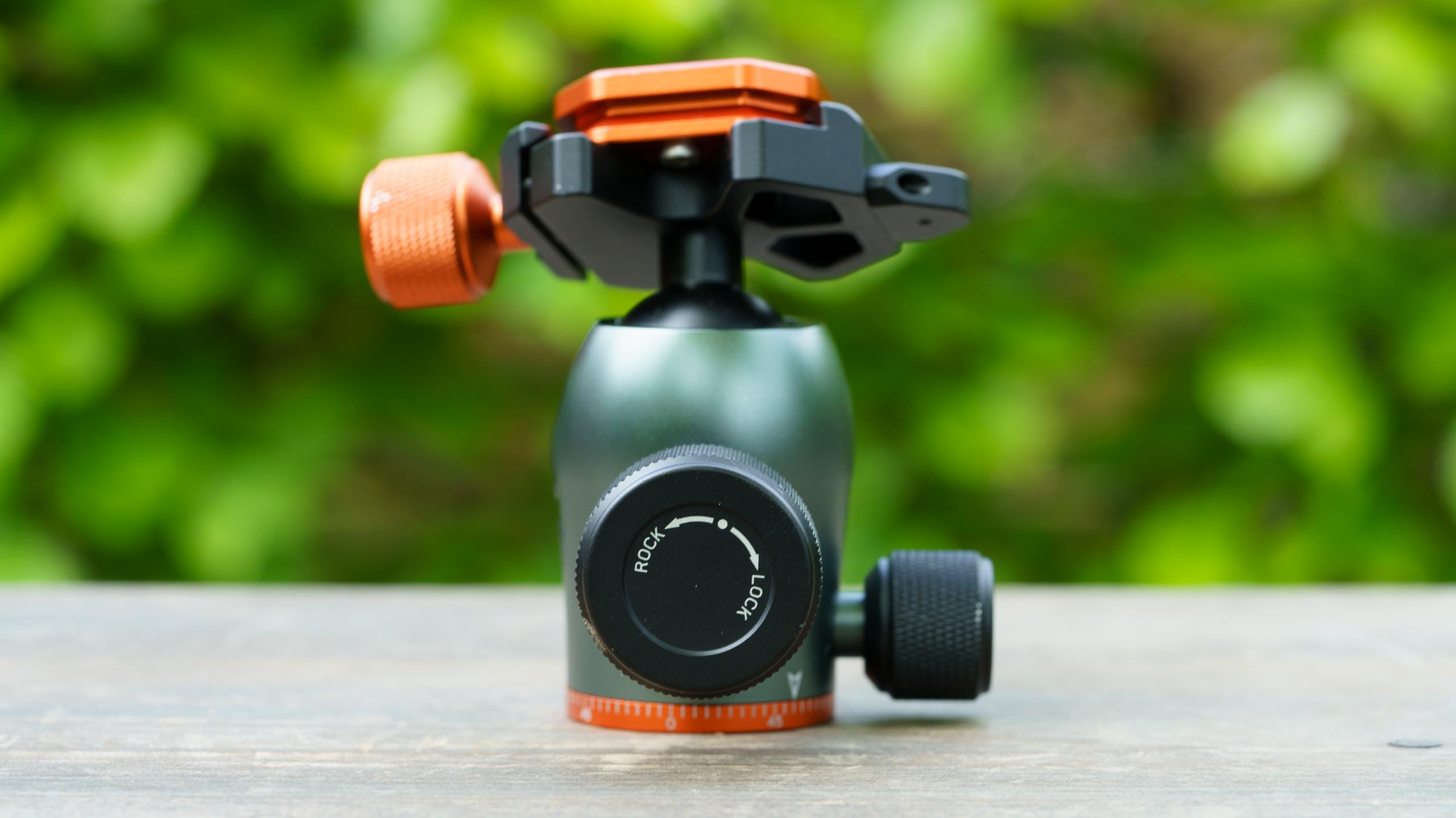
Specifications
Reasons to buy
Reasons to avoid
Although they tend not to come as cheap as other options, 3 Legged Thing's ball heads and tripods have a reputation for exceptional carrying capacity and stability. It's well-deserved. The AirHed Pro is the firm's flagship ball head, able to handle a whopping 40kg of kit (really more than you're ever likely to need) without issue. It is milled from aircraft-grade magnesium alloy, meaning it's not only strong but also lightweight, weighing just 323g.
It comes with an integrated 360-degree clamp that allows for smooth panning even on bumpy terrain, and its quick-release plate is Arca-Swiss compatible. It's an extraordinary piece of kit that does everything you need from a ball head and more. While it is more expensive than some contenders on this list, I'd add that the AirHed Pro represents absolutely fantastic value for money.
Two product options are available: the standard AirHed Pro has a knob to release the QR plate from the head, and the AirHed Pro Lever, which – you've guessed it – uses a lever release instead. Both versions have the same asking price.
See our full 3 Legged Thing AirHed Pro review
Best for lightweight
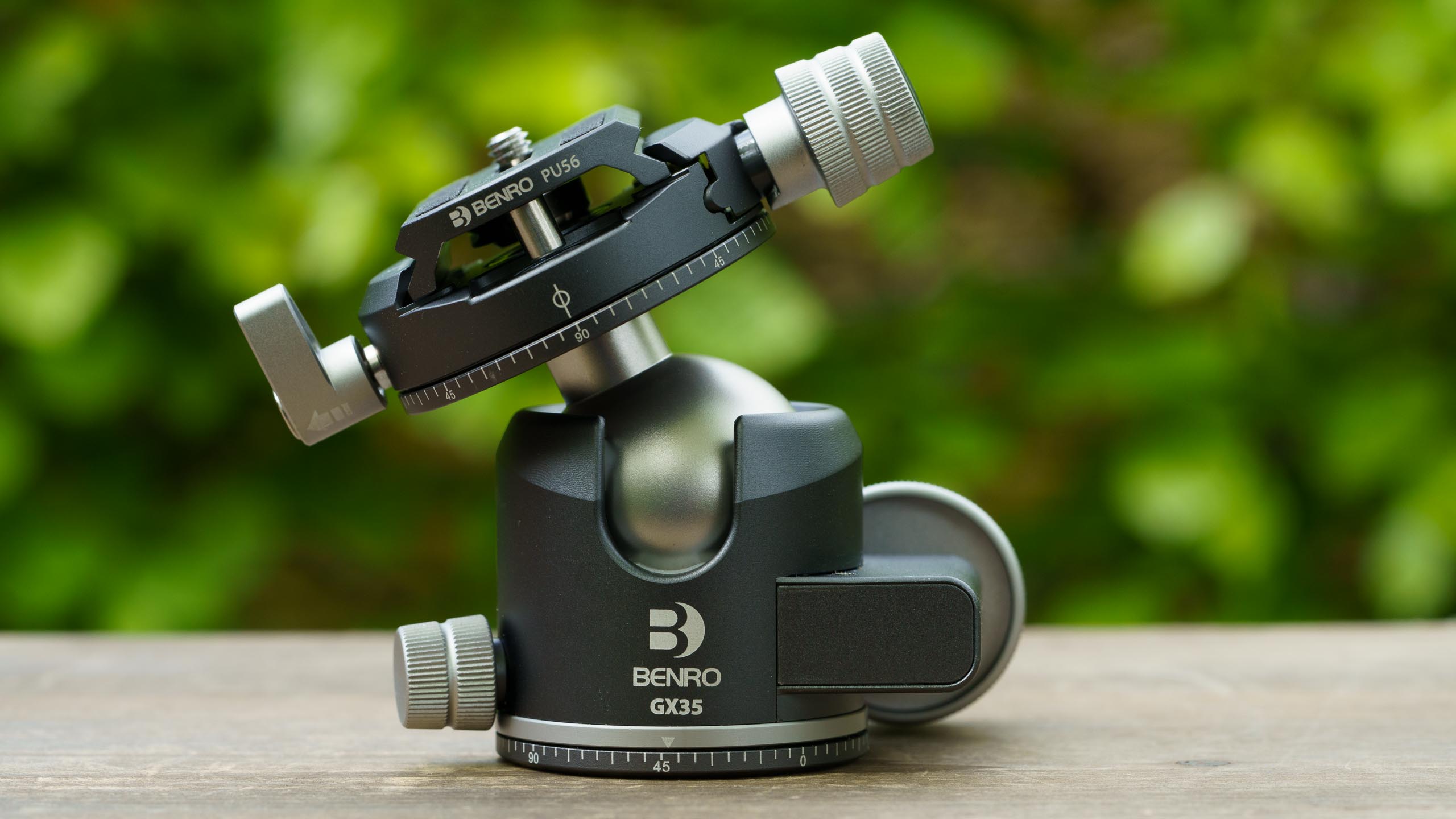
Specifications
Reasons to buy
Reasons to avoid
Despite weighing only 400g, the Benro GX35 is able to support a whopping 35kg of camera gear, with extra stability assured by the relatively large 40mm-diameter ball. There's a dedicated panning lock for the rotating base of the head, along with a numbered degree scale to assist with shooting accurate multi-shot panoramas. What's more, a secondary panning axis above the ball adds even more panorama versatility.
The low-profile design of the head gives it a relatively squat appearance and works in your favor for low-level shooting. It also keeps the folded size of a tripod kit to a minimum, if you need to stash it away in small spaces.
An Arca-Swiss compatible mounting plate maintains easy cross-compatibility with other Arca-based tripods or monopods you may have, while the eye-catching design is supplemented by nice ergonomic touches like the knurled metal locking knobs.
See our full Benro GX35 review
Best for budget
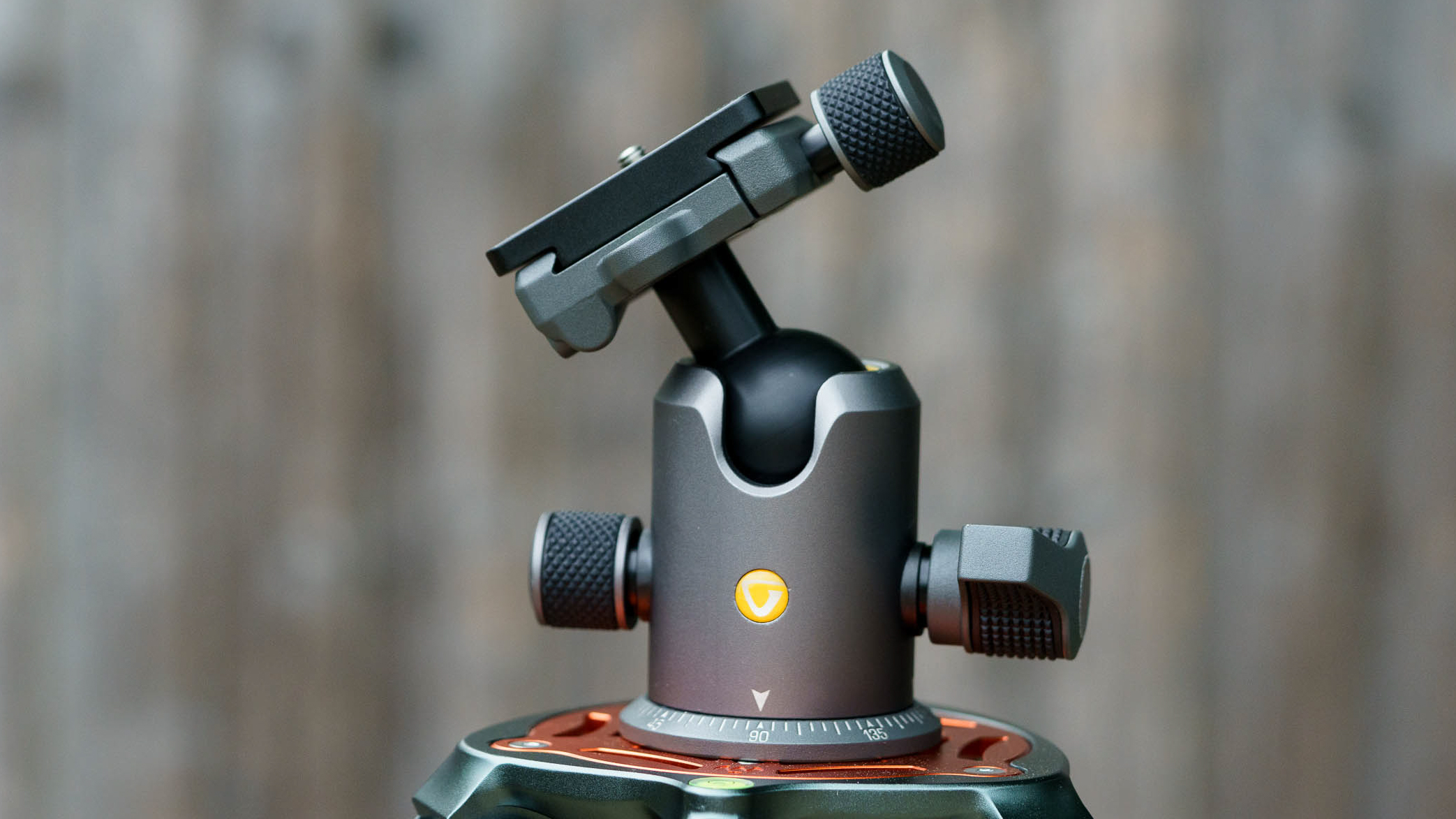
Specifications
Reasons to buy
Reasons to avoid
It's inexpensive for a big-brand tripod head, but the Alta BH-250 is still rated to support a whopping 20kg of kit. Build quality also feels reassuringly robust, but the ball movement isn’t quite as fluid-feeling as that of some other tripod heads and the D-ring on the quick-release plate needs to be better attached. Nevertheless, it’s capable of holding heavy lenses and camera set-ups still without drooping.
Such a hefty payload capacity does mean this isn’t the most portable option, tipping the scales at 577g and measuring 117mm tall, but the overall shape is slim and should sit comfortably within a tripod with flip-up legs. The relatively compact quick-release top plate helps with this, yet it still sports two useful, easily visible bubble levels, and maintains Arca compatibility.
Vanguard’s chunky, rubber-covered locking knobs are all very easy to grip, though the conventional friction adjustment dial isn’t quite as tactile as Manfrotto’s clicky design.
See our full Vanguard Alta BH-250 review
Best for professionals
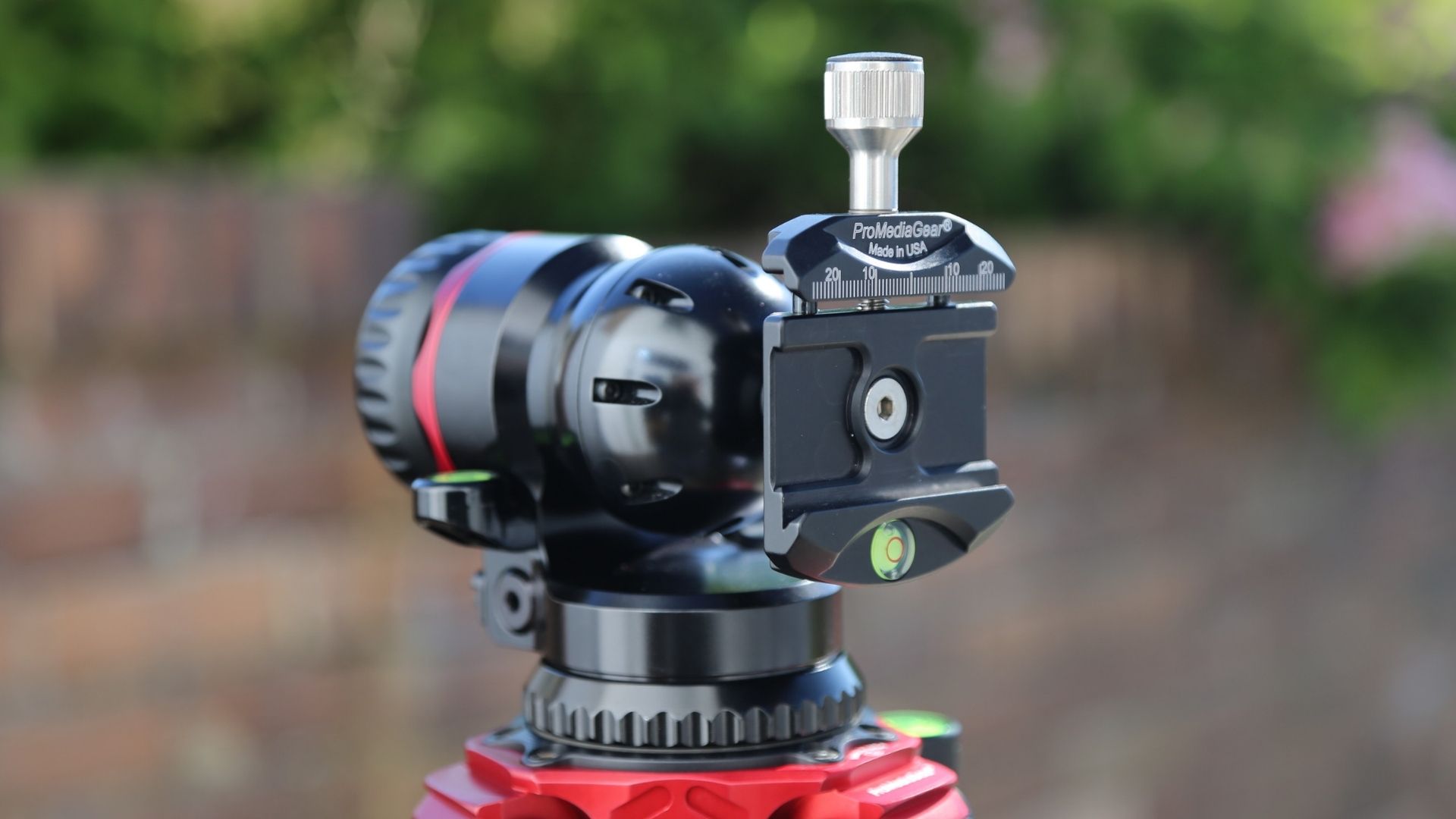
Specifications
Reasons to buy
Reasons to avoid
The ProMediaGear BH1 is a unique ball head that has excellent craftsmanship and ease of use. Equally, as at home in the kitbag of a landscape photographer or indoors in a studio, the BH1 is as solid and as precise as any ball head I've used. I liked its flexibility and the fact that I can operate the main lock knob and the pan lock knob quite easily while wearing gloves.
One thing that really impressed me is that the BH1 shines for its precision and complete lack of droop. All too often with ball heads, you can position a fairly heavy camera and lens, tighten the clamp, and find that everything sags a bit when you let go of the camera. That's certainly not the case with the BH1.
Sure, it's expensive and its movement is not as smooth as that of some of its rivals, but you're getting something uniquely precise – and if that’s your priority then the BH1 delivers.
See our full ProMediaGear BH1 review
Best for value
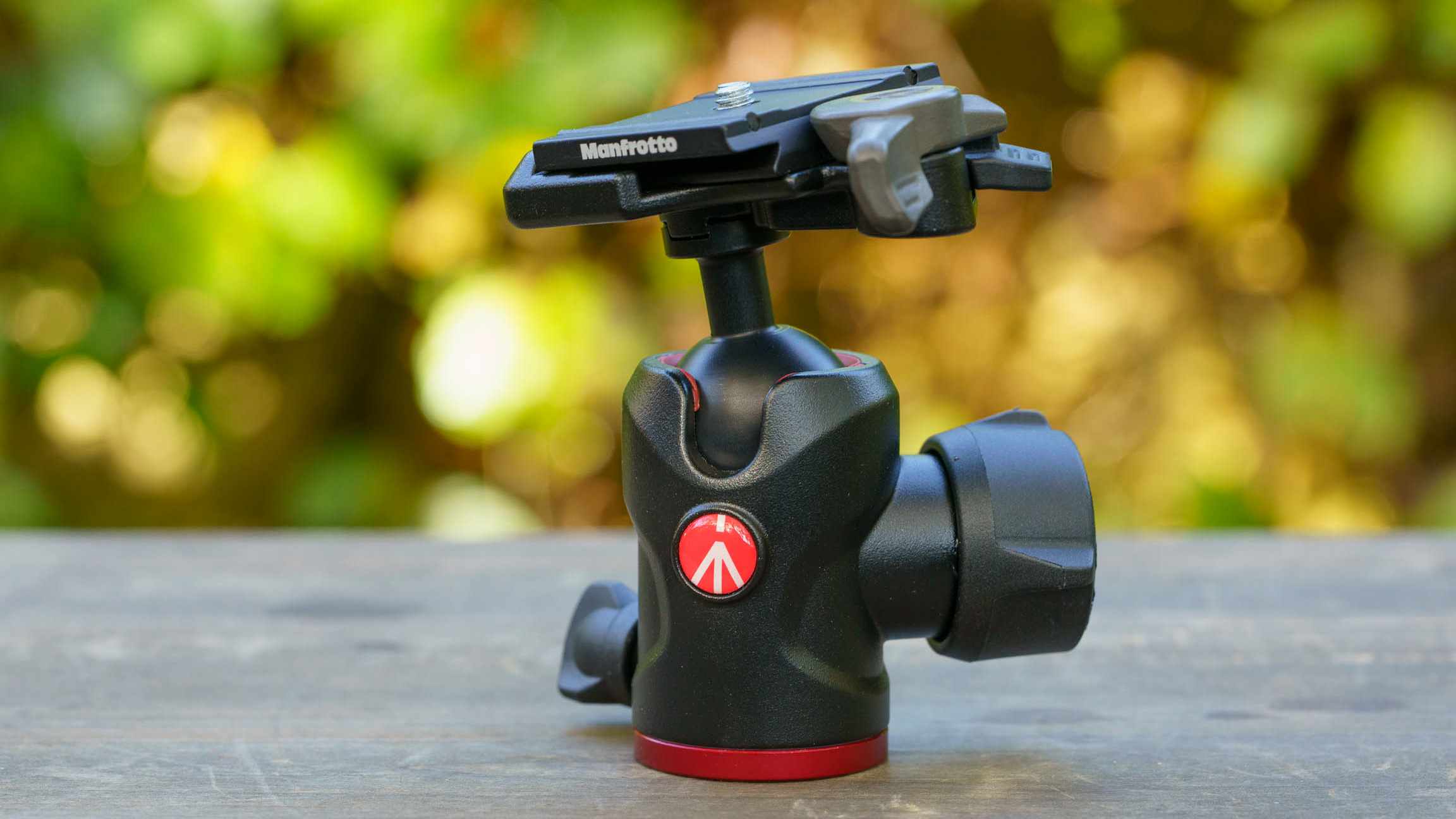
Specifications
Reasons to buy
Reasons to avoid
Keeping things simple doesn't mean compromising on quality. You may just need an unfussy ball head that works but still want the reassurance of a trusted brand. Step forward the Manfrotto 494 Center Ball Head, which comes at a great price but still offers that Manfrotto dependability.
Don’t be fooled by the price of this ball head, I found it was really rather good when I tested it. It can support up to 8kg of kit, and offers panoramic and friction control knobs for easy, intuitive operation. This version comes with the 200PL-PRO Quick Release Plate, and the head has an integrated RC2 quick-release cam lock. The aluminum construction is lightweight but reasonably hardy, and there's a dedicated tension control dial for the ball-and-socket movements.
Compared with many ball heads, the 494 has a very slim profile. That makes it ideal for use with travel tripods in which you extend the center column and swing the legs up, so that the feet surround the head for compact stowage.
Read our full Manfrotto 494 ball head review
Best for luxury
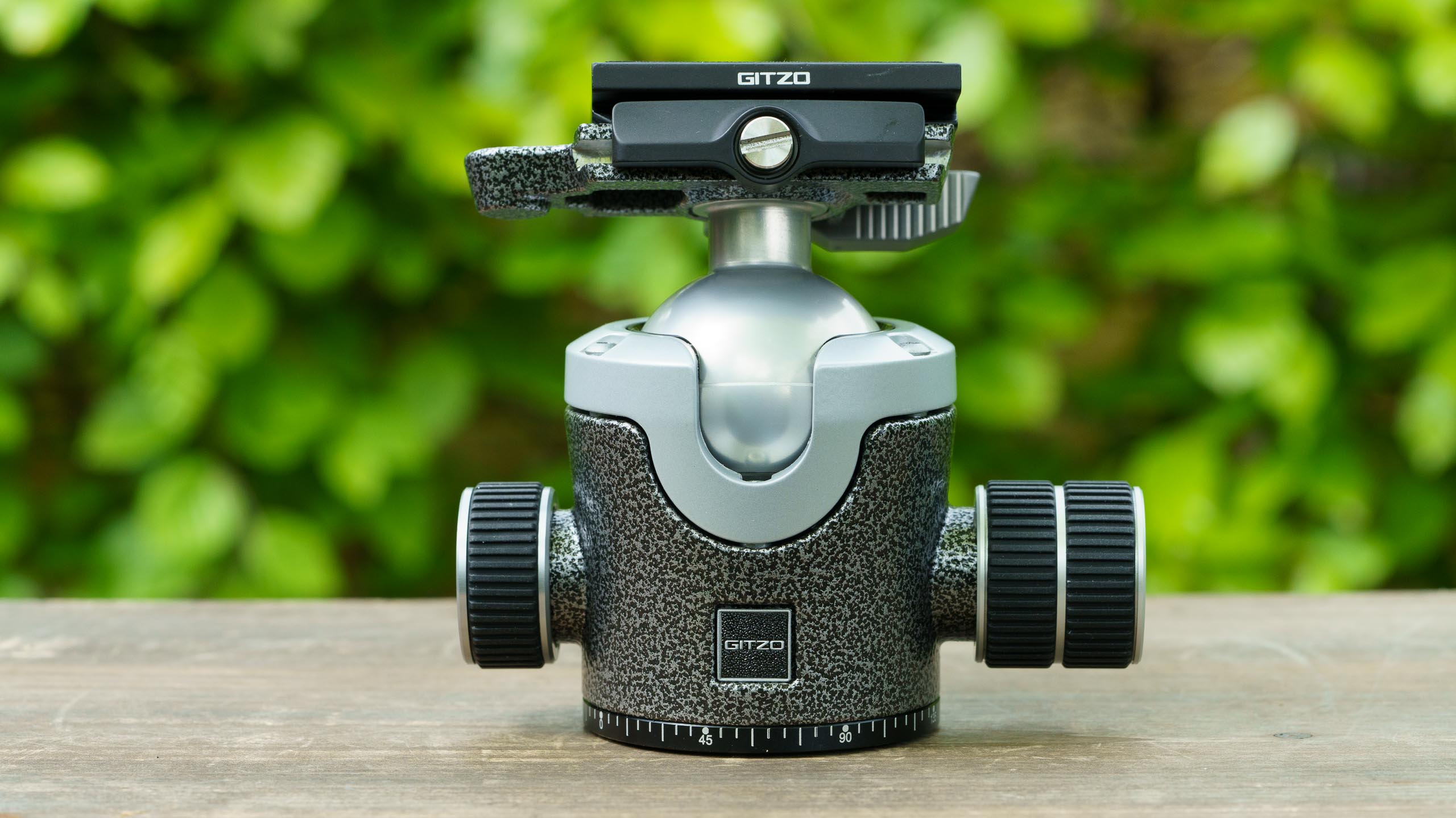
Specifications
Reasons to buy
Reasons to avoid
At 12.5cm tall and weighing in at a hefty 900g, this Gitzo tells you that it means business. It’s to be expected though, as the head comes from Gitzo’s pro-orientated Series 4 Systematic range, and is rated to support a staggering 30kg of weight.
But what you lose in portability, you gain in usability. The large Arca-Swiss-compatible quick-release mounting plate and release lever offer unmatched ease of use, as do the large diameter locking and friction control knobs, both of which exude luxury.
See our full Gitzo GH4383LR Center Ball Head review
Best for stills & video
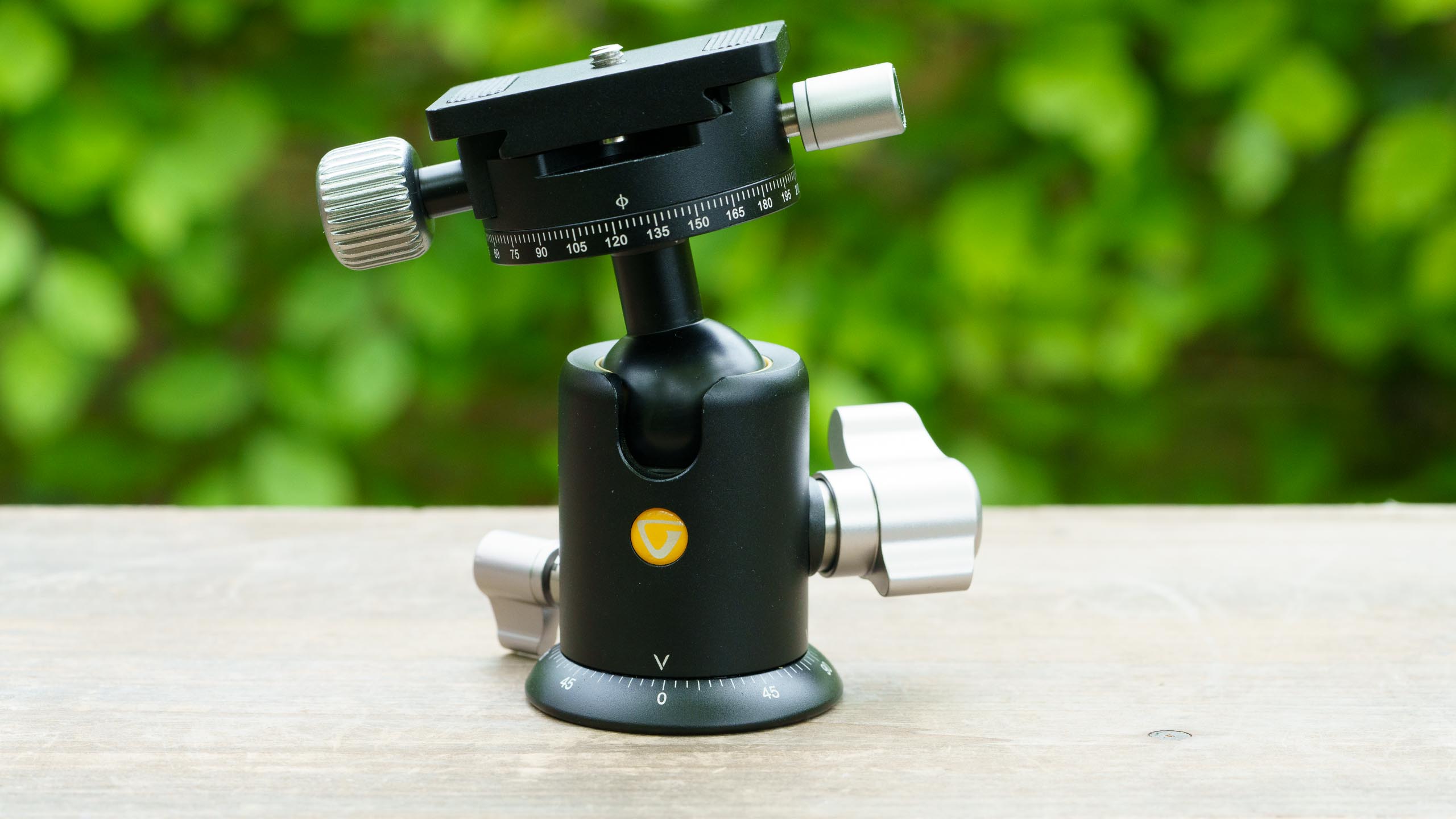
Specifications
Reasons to buy
Reasons to avoid
Vanguard’s Veo BH-160S Dual-Axis Ball Head looks and feels very well made yet its price is attractively low. The controls are also nicely shaped to give a good, comfortable grip and allow you to apply the force that’s sometimes required.
The dual-axis design means that you can pan the complete head, or just the camera platform at the top. The latter gives the advantage that you don't need to exactly level the tripod legs if you're going to panning when shooting videos or panoramic sequences.
As with some other heads, it’s a shame that the bubble level isn’t visible when a camera is mounted, and it would be nice to see an Allen key provided, ideally on a key ring, to tighten the quick-release plate. Overall, however, it’s an excellent ball head that copes superbly with heavy optics to ensure shake-free images.
Read our full Vanguard’s Veo BH-160S Dual-Axis Ball Head review
How to choose the best ball heads for tripods
Many of the considerations around which ball head to use for a tripod depend on what you're going to be using it for. If you want a lightweight option for run-and-fun shooting then something of either plastic or lightweight metal will be your best bet. Alternatively, if you're working in a studio and want something that isn't going anywhere then a solid metal construction is the way to go.
Getting a mount type that will work with your camera is also important. The Arca-Swiss quick-release mounting standard is great for maintaining interchangeable compatibility with other tripod heads, but some manufacturers still stick to proprietary designs.
The requirement for smooth panning and tilting is another consideration. If you do a lot of these types of shots, then you'll probably want to spend a little bit more to make sure you get the best quality mechanism. There's nothing worse than jittery movements or a tripod head that ceases up after a few months of use.
How can I avoid camera movement mid-shot?
Clamping your ball and pan movement with locking knobs that aren’t grippy enough can result in unwanted camera movement. Rubber knob coatings and lever designs can really help.
How do I ensure smooth movement?
The trouble with applying friction is some balls can start to stick, resulting in jerky movement and framing frustration. A quality ball coating and socket lining should alleviate this.
How we test ball heads for tripods
The main areas of testing are the build quality and the performance of the ball head. The build quality considers things like the materials and how durable they are. It also looks at how fit for purpose each individual part is – something that is important for a mainstay piece of camera equipment.
The performance of the ball heads is tested in real-world scenarios with a camera mounted on top. All the features are tested, and movement is put under the microscope, so to speak. Locking mechanisms are tried and tried again to make sure they are both robust and reliable.
Get the Digital Camera World Newsletter
The best camera deals, reviews, product advice, and unmissable photography news, direct to your inbox!
Ben is the Imaging Labs manager, responsible for all the testing on Digital Camera World and across the entire photography portfolio at Future. Whether he's in the lab testing the sharpness of new lenses, the resolution of the latest image sensors, the zoom range of monster bridge cameras or even the latest camera phones, Ben is our go-to guy for technical insight. He's also the team's man-at-arms when it comes to camera bags, filters, memory cards, and all manner of camera accessories – his lab is a bit like the Batcave of photography! With years of experience trialling and testing kit, he's a human encyclopedia of benchmarks when it comes to recommending the best buys.
- Adam WaringGuides Editor

